These Filipino fresh spring rolls are basically like soft, delicate crepes wrapped around a tasty filling of palm heart, pork, and shrimp. If you've had the fried lumpia before, these are their softer, fresher cousins - no frying needed!
The star of the show is the peanut sauce. It's rich, garlicky, and honestly, it's what makes these lumpia special. Once you try it, you'll want to pour it on everything!
Making these at home might seem tricky at first, but don't worry. Think of it like making pancakes - once you get the hang of the wrappers, the rest is just cooking up the filling and putting it all together. You can adjust the filling however you like. No palm heart? No problem! You can use bamboo shoots instead.
Every Filipino family has their own version of lumpia, and that's what makes it fun. Some add more garlic, others make the sauce spicier - it's all about finding what you love. Ready to make your own? Let's get cooking!
Jump to:

Why You'll Love This Recipe
- Authentic Filipino flavors passed down through generations
- Restaurant-quality results with homemade wrappers
- Versatile as an appetizer, snack, or main dish
- Perfect balance of textures - crisp vegetables, tender meat, and silky wrapper
- Customizable filling options for different dietary preferences
- Special garlic-peanut sauce that sets it apart
Ingredients
Each ingredient in this recipe serves a special purpose. Palm heart (ubod) provides a delicate sweetness and unique texture that's the star of this dish. Pork belly adds richness and savory depth, while shrimp contributes a subtle seafood sweetness.
The cornstarch wrappers offer a soft, slightly chewy texture that's far superior to store-bought alternatives. The peanut sauce combines garlic's pungency with peanuts' nuttiness and brown sugar's caramel notes to create the perfect balance of flavors.
Fresh lettuce adds a crisp contrast to the soft filling and wrapper, making each bite a perfect blend of textures and tastes.
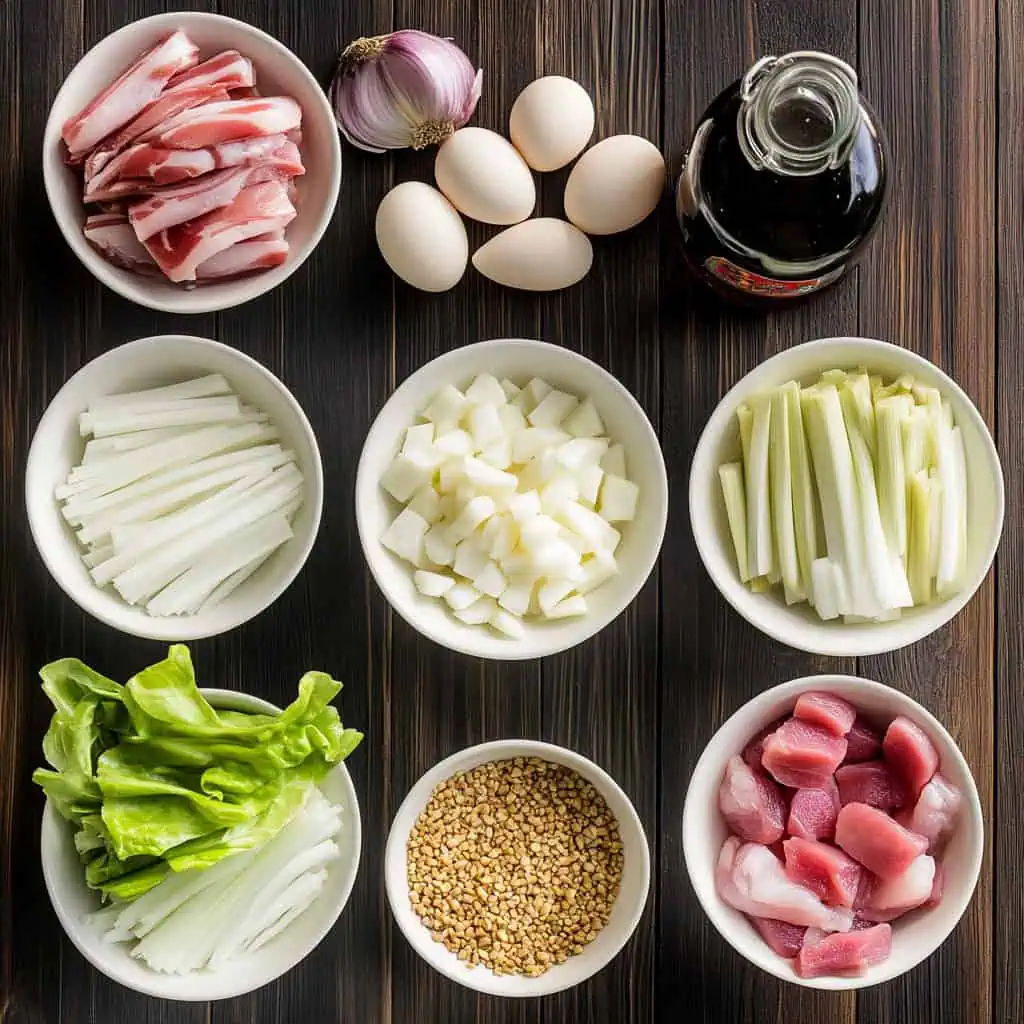
For the Lumpia Filling:
- 1 tablespoon canola oil
- 1 onion, peeled and chopped
- 2 cloves garlic, peeled and minced
- ¼ pound pork belly, diced
- ½ pound shrimp, peeled and coarsely chopped
- 1 tablespoon fish sauce
- ½ cup water
- 2 pounds ubod (palm heart), cut into matchsticks
- Salt and pepper to taste
- Green leaf lettuce leaves
For the Special Peanut Sauce:
- 2 ¾ cups water
- ¼ cup soy sauce
- ¾ cup brown sugar
- ½ teaspoon salt
- 1 cup unsalted peanuts, ground
- 1 head garlic, peeled and minced
- 3 tablespoons cornstarch
- 2 tablespoons peanut butter
For the Lumpia Wrappers:
- 1 cup cornstarch
- 1 ½ cups water
- 3 eggs, well beaten
- 1 teaspoon salt
- 1 teaspoon sugar
- 1 teaspoon canola oil
- Nonstick cooking spray
Equipment
- 9-inch non-stick skillet - Essential for creating thin, even wrappers without sticking
- Wide pan or wok - Provides ample space for sautéing the filling ingredients evenly
- Mixing bowls - For preparing different components of the recipe separately
- Whisk - Creates a smooth, lump-free batter for perfect wrappers
- Measuring cups and spoons - Ensures recipe precision for consistent results
- Spatula - Helps flip delicate crepes without tearing
- Sharp knife - For julienning vegetables and cutting meat precisely
- Cutting board - Provides a stable surface for all your prep work
- Saucepot - For making the peanut sauce with even heat distribution
- Fine-mesh strainer - Helps drain excess liquid from filling to prevent soggy lumpia

How To Make
- Prepare the wrapper batter: In a large bowl, whisk together cornstarch and water until smooth. Add beaten eggs, salt, sugar, and oil, mixing until you have a thin, runny batter. Let rest for 15 minutes while preparing other ingredients.
- Make the filling: Heat oil in a wide pan over medium heat (350°F/175°C). Add chopped onions and minced garlic, cooking until soft and fragrant, about 2-3 minutes. Add diced pork belly and cook until it starts to brown, around 5-7 minutes. Add chopped shrimp and cook until pink, about 2-3 minutes. Pour in fish sauce and cook for another minute.
- Finish the filling: Add half a cup of water to the pan and let the pork simmer until tender, about 10-12 minutes. Add julienned palm heart, lower heat to medium-low (300°F/150°C), cover, and cook for 10-15 minutes until palm heart becomes tender. Season with salt and pepper to taste. Drain the filling well and set aside to cool slightly.
- Prepare the peanut sauce: In a saucepot over medium heat, combine water, soy sauce, brown sugar, and salt. Bring to a boil, stirring until sugar dissolves completely. Add minced garlic and ground peanuts, cooking for 2-3 minutes. Mix cornstarch with a quarter cup of water until smooth, then whisk into simmering sauce until thickened. Stir in peanut butter until well combined. Keep warm over very low heat.
- Make the wrappers: Heat a 9-inch non-stick pan over low heat (250°F/120°C). Spray with cooking spray. Pour a quarter cup of batter into center of pan, quickly tilting in all directions to spread batter evenly. Cook until edges start to pull away and small bubbles form in the middle, about 30-40 seconds. Gently flip and cook another 10 seconds. Slide finished wrapper onto a plate. Repeat, spraying between each wrapper, until all batter is used.
- Assemble the lumpia: Lay a wrapper on a clean surface. Place a fresh lettuce leaf on top. Spoon about a quarter cup of cooled filling across the middle. Fold sides over to cover filling, similar to wrapping a burrito.
- Serve: Place lumpia on a plate, generously pour warm peanut sauce over top, and sprinkle with extra ground peanuts and minced garlic if desired.

Tips from Lola's Kitchen
- Wrapper Success: Maintain low heat when making wrappers to prevent burning and ensure they're thin but sturdy.
- Batter Patience: Always rest your batter for at least 15 minutes before making wrappers for better texture.
- Wrapper Care: Keep prepared wrappers covered with a slightly damp cloth while working to prevent drying out.
- Filling Preparation: Let the filling cool slightly before wrapping to prevent wrapper tears from steam.
- Drainage Matters: Always drain the filling well to prevent soggy lumpia—excess moisture is the enemy!
- Sauce Management: Make extra sauce—it's always the first to disappear! If it thickens while standing, simply add a little warm water.
- Assembly Timing: For best results, assemble just before serving rather than making hours ahead.
- Don't Overfill: Use restraint with filling amounts—overstuffed lumpia tend to tear or fall apart.
Substitutions
- No Palm Heart? Use bamboo shoots (labong) or store-bought heart of palm instead.
- Protein Options: Replace pork belly with chicken breast, lean ground pork, or tofu for lighter versions.
- Seafood Alternatives: Substitute shrimp with crabmeat, flaked white fish, or simply add more vegetables.
- Wrapper Options: If cornstarch is unavailable, try rice flour or all-purpose flour (though texture will differ).
- Sweetener Swaps: Replace brown sugar with coconut sugar or palm sugar for a more traditional flavor.
- Lettuce Varieties: Green leaf lettuce can be replaced with butter lettuce or romaine hearts.
- Nut Allergies? Try sunflower seed butter instead of peanut butter and ground sunflower seeds instead of peanuts.
Troubleshooting
- Wrapper Tears Easily: Your batter might be too thin; add a bit more cornstarch and mix well.
- Wrappers Too Thick: Batter may be too thick; add water a tablespoon at a time until it reaches pouring consistency.
- Filling Too Watery: Drain longer or return to pan and cook uncovered to reduce excess liquid.
- Sauce Too Thick: Add warm water gradually while stirring until desired consistency is reached.
- Sauce Too Thin: Mix additional cornstarch with cold water and whisk into simmering sauce.
- Wrapper Sticks to Pan: Ensure pan is properly greased between each wrapper and check that heat isn't too high.
- Wrapper Edge Cooking Too Fast: Your pan may be uneven; try rotating it while cooking or use a different pan.
- Lumpia Falls Apart When Eating: You may need to wrap it tighter or secure with a toothpick for serving.
Storage & Reheating
- Component Storage: Always store components separately in airtight containers for best results.
- Filling: Refrigerate for up to 3 days; may freeze for up to 1 month.
- Wrappers: Layer with wax paper between each wrapper, refrigerate up to 3 days or freeze up to 4 months.
- Sauce: Refrigerate for up to 5 days; may develop a skin on top—simply stir well before using.
- Assembled Lumpia: Best consumed immediately after assembly, but can be refrigerated for up to 24 hours if tightly wrapped.
- Reheating Sauce: Warm over low heat, adding water as needed to restore original consistency.
- Reheating Filling: Microwave or quickly sauté until just warmed through—avoid overcooking.
- Frozen Wrappers: Thaw in refrigerator overnight before attempting to separate and use.

FAQ
Can I make the wrappers ahead of time?
Yes! Make them up to 3 days ahead. Stack with wax paper between each wrapper and store in an airtight container in the refrigerator. If they stick slightly, carefully separate them when ready to use.
Why is my sauce too thick/thin?
The consistency depends on how long you cook it and how much cornstarch you add. For thinner sauce, add warm water gradually while stirring. For thicker sauce, mix additional cornstarch with cold water and whisk into simmering sauce.
Can I freeze assembled lumpia?
Fresh lumpia is best eaten immediately after assembly. Instead, freeze components separately: wrappers (with wax paper between), filling, and sauce (without lettuce).
Where can I find ubod/palm heart?
Check Asian grocery stores in the canned goods section, or look for "hearts of palm" in well-stocked supermarkets. Fresh ubod is rare outside the Philippines, but canned works well in this recipe.
Is there a vegetarian version?
Absolutely! Replace meat and shrimp with firm tofu, mushrooms (shiitake and oyster work well), and additional vegetables like carrots and jicama. Use vegetable broth instead of fish sauce.
How do I prevent the filling from being too watery?
Make sure to drain the filling well after cooking and let it cool slightly before wrapping. You can also cook it uncovered for a few extra minutes to evaporate excess moisture.
What's the best way to serve these for a party?
Prepare all components in advance, keeping them separate. Set up an assembly station with wrappers, lettuce, filling, and sauce so guests can assemble their own, or pre-assemble just before guests arrive and serve with sauce on the side for dipping.
Can I use store-bought spring roll wrappers instead?
Yes, but the texture and flavor will be different. Look for fresh "lumpia wrappers" rather than the dried rice paper typically used for Vietnamese spring rolls. The homemade cornstarch wrappers are worth the effort for authentic flavor.
How spicy is this dish traditionally?
Traditional lumpiang ubod is not spicy, but you can easily add heat by incorporating chopped bird's eye chilies into the sauce or serving them on the side.
What drinks pair well with lumpiang ubod?
These fresh spring rolls pair beautifully with cold calamansi juice, iced tea, or even a light beer. For a traditional Filipino pairing, serve with hot salabat (ginger tea).
Related
Looking for other recipes like this? Try these:
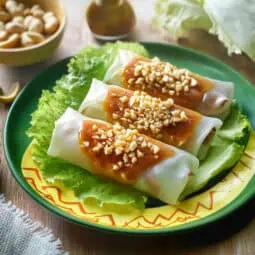
Lumpiang Ubod (Filipino Fresh Spring Rolls)
Equipment
- 9-inch non-stick skillet ensures even cooking of crepes
- Wide pan or wok (kawali) for sautéing filling
- Mixing bowls (mangkok) for preparing different components
- Whisk (wire whisk/panghalo) for creating smooth batter
- Measuring cups and spoons (Panukat) for precise ingredients
- Spatula for flipping crepes
- Sharp knife (kutsilyo) for julienning vegetables
- Cutting board (Sangkalan) for preparation
- Saucepot (kaldero) for sauce making
- Fine-mesh strainer (salaan) for draining filling
Ingredients
For the Lumpia Filling
- 1 tablespoon canola oil
- 1 onion peeled and chopped (sibuyas)
- 2 cloves garlic peeled and minced (bawang)
- ¼ pound pork belly diced (liempo)
- ½ pound shrimp peeled and coarsely chopped (hipon)
- 1 tablespoon fish sauce patis
- ½ cup water tubig
- 2 pounds ubod palm heart/puso ng niyog, cut into matchsticks
- Salt and pepper to taste asin at paminta
- Green leaf lettuce leaves letsugas
For the Special Peanut Sauce
- 2 ¾ cups water tubig
- ¼ cup soy sauce toyo
- ¾ cup brown sugar asukal na pula
- ½ teaspoon salt
- 1 cup unsalted peanuts ground (mani)
- 1 head garlic peeled and minced
- 3 tablespoons cornstarch corn starch/gawgaw
- 2 tablespoons peanut butter
For the Lumpia Wrappers
- 1 cup cornstarch
- 1 ½ cups water tubig
- 3 eggs itlog, well beaten
- 1 teaspoon salt asin
- 1 teaspoon sugar asukal
- 1 teaspoon canola oil mantika
- Nonstick cooking spray
Instructions
- Start by preparing your wrapper batter. In a large bowl, whisk together cornstarch and water until smooth. Add the beaten eggs, salt, sugar, and oil, mixing until you have a thin, runny batter. Let this rest for 15 minutes while you prepare other ingredients.
- Begin making your filling. Heat oil in a wide pan over medium heat (350°F/175°C). Add chopped onions and minced garlic, cooking until soft and fragrant, about 2-3 minutes. Add the diced pork belly and cook until it starts to brown, around 5-7 minutes. Add the chopped shrimp and cook until they turn pink, about 2-3 minutes. Pour in the fish sauce and cook for another minute.
- Add half a cup of water to the pan and let the pork simmer until tender, about 10-12 minutes. Add your julienned palm heart (ubod), lower the heat to medium-low (300°F/150°C), cover the pan, and cook for 10-15 minutes until the palm heart becomes tender. Season with salt and pepper to taste. Drain the filling well and set aside to cool slightly.
- While the filling cools, make your peanut sauce. In a saucepot over medium heat, combine water, soy sauce, brown sugar, and salt. Bring this to a boil, stirring until the sugar dissolves completely. Add minced garlic and ground peanuts, cooking for 2-3 minutes. Mix cornstarch with a quarter cup of water until smooth, then whisk this mixture into your simmering sauce until it thickens. Stir in the peanut butter until well combined. Keep your sauce warm over very low heat.
- Now make your wrappers. Heat a 9-inch non-stick pan over low heat (250°F/120°C). Spray the pan with cooking spray. Pour a quarter cup of your rested batter into the center of the pan, quickly tilting the pan in all directions to spread the batter evenly. Cook until the edges start to pull away from the pan and small bubbles form in the middle, about 30-40 seconds. Gently flip the wrapper and cook for another 10 seconds. Slide the finished wrapper onto a plate. Repeat this process, spraying the pan between each wrapper, until you've used all your batter.
- To assemble your lumpia, lay a wrapper on a clean surface. Place a fresh lettuce leaf on top. Spoon about a quarter cup of your cooled filling across the middle of the wrapper. Fold the sides over to cover the filling, similar to wrapping a burrito.
- Serve your lumpia immediately by placing it on a plate, generously pouring the warm peanut sauce over top, and sprinkling with extra ground peanuts and minced garlic.
- Remember to keep your wrappers covered with a slightly damp cloth while working to prevent them from drying out, and don't overfill your lumpia or the wrapper might tear. If your sauce becomes too thick while working, simply stir in a little warm water to reach the right consistency.
Tips from Lola's Kitchen
- Maintain low heat when making wrappers to prevent burning
- Let the filling cool slightly before wrapping to prevent tearing
- Make extra sauce - it's always the first to run out!
- Rest the batter for 15 minutes before making wrappers
- Keep wrappers covered with a damp cloth while working
- Always drain the filling well to prevent soggy lumpia
Nutrition
The Story Behind Lumpiang Ubod
Ever wondered how a humble palm heart became the star of one of the Philippines' most beloved fresh spring rolls? Lumpiang Ubod's story starts in the charming city of Silay, Negros Occidental, known as the "Paris of Negros" for its rich cultural heritage and culinary traditions. This special version of lumpia was born in this historic sugar-producing region, where coconut palms grow abundantly alongside vast sugar cane fields.
The heart of this dish is ubod - the tender, white pith found inside coconut palm trees. In the early days, when sugar plantations dotted Silay's landscape, coconut farmers discovered that this soft, cylindrical core had a delicate, sweet flavor that paired beautifully with savory ingredients. They began incorporating it into their local version of lumpia, a dish that originally came from Chinese immigrants who brought their spring roll tradition to Philippine shores.
What sets Lumpiang Ubod apart from other Filipino lumpia varieties is its fresh, unfried preparation and its signature peanut-garlic sauce. While other regions embraced fried lumpia with vinegar dipping sauce, Silay's version maintained its fresh, delicate character. The combination of soft, homemade crepe-like wrappers, crisp lettuce, and tender palm heart filling created a texture that perfectly complemented the rich, nutty sauce.
Today, Lumpiang Ubod has traveled far beyond Silay's borders, becoming a fixture at Filipino celebrations and family gatherings across the country. Many families have added their own twists to the recipe, but the essence remains the same - tender palm heart, delicate wrapper, and that irresistible peanut sauce that keeps everyone coming back for more. Local cooks still insist that the best Lumpiang Ubod is made with fresh palm heart, though modern versions sometimes substitute bamboo shoots when ubod isn't available.
Whether enjoyed as a light afternoon merienda (snack) or served as an appetizer at special occasions, Lumpiang Ubod represents the Filipino talent for transforming simple ingredients into something extraordinary. It's a testament to the ingenuity of Silay's cooks, who created a dish that perfectly balances flavors, textures, and the fresh, natural sweetness of palm heart.
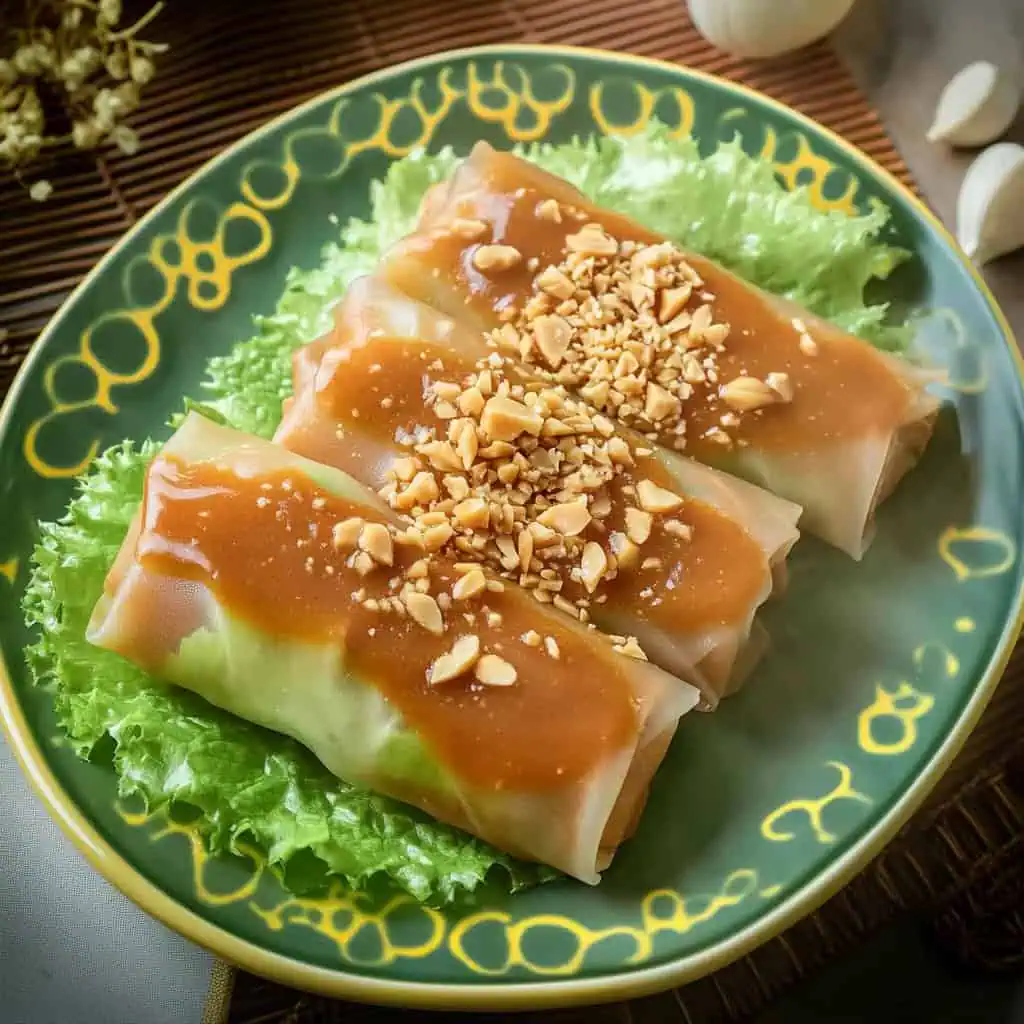





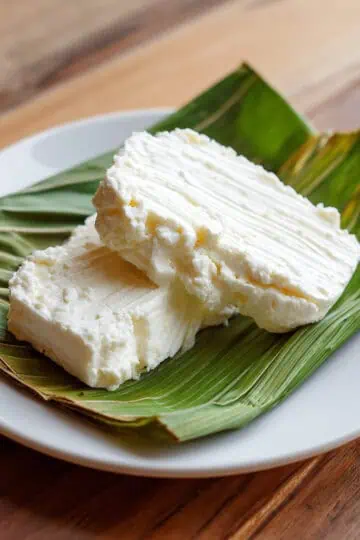
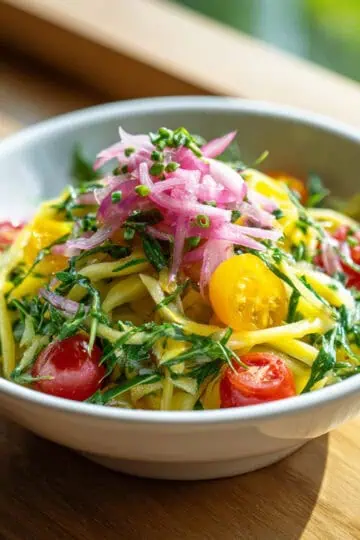
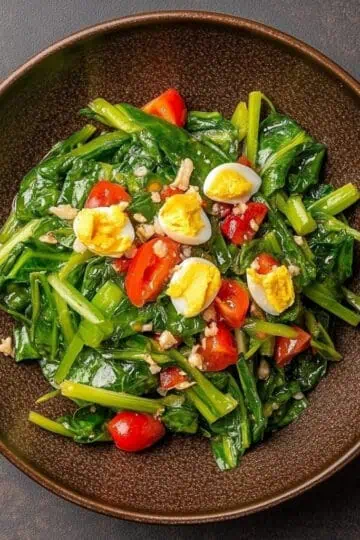
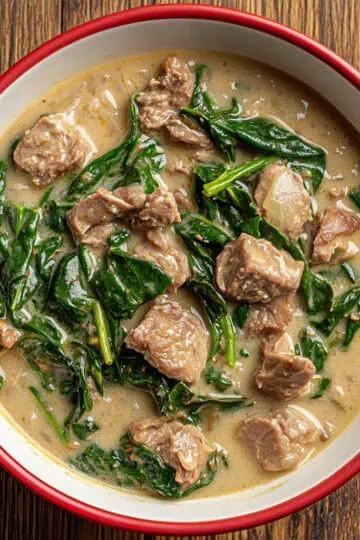
Comments
No Comments